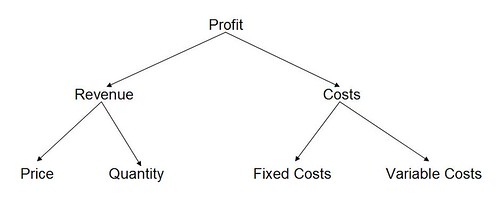
Revenue leakage has become a very real concern for thousands of businesses across the world, costing them billions of dollars every year in lower net revenues. If these leaks are left unchecked, they could have a profound negative impact on your business, leaving your profit margins suffering a slow “death through a thousand paper cuts.” Your organization may also be burdened with the cost of taking care of your customers’ needs without being offset by sufficient incoming revenue.
With the business landscape becoming more competitive with each passing day, you cannot let margin compression compromise the financial sustainability of your organization. In spite of this, many businesses continue to allow their hard-earned revenues to escape through cracks within their revenue funnel. It is important to detect and patch the leaks in order to get instant financial relief and improve processes in the long term. The Six Sigma philosophy is one way to achieve this.
How Streamlined Processes Improve Revenue and Reduce Leakage
Six Sigma methods have been proven as a way to increase revenue for many organizations. Through streamlining the organization’s unique processes by the elimination of wasteful steps, delivery of products and services is achieved quickly and more efficiently without losing quality. The following steps improve the performance of a business and increase revenue:
1. Assess
Anytime a business process related to revenue management needs to be improved, the implementation team needs to start by carrying out an assessment of the workflow from the start to the end of the process. The assessment carried out will provide analysts with the foundation to create an optimal solution for process improvement.
Every business has its unique qualities. This means that the Six Sigma implementation team needs to have an intimate understanding of the organization’s challenges and ultimate goals in order to devise a workable and systematic plan to improve them.
2. Plan
Quite often, marketing teams operate in an isolated manner, executing and optimizing in a manner that is disconnected from the company’s revenue goals, corporate planning and revenue performance measurement. What naturally results is confusion regarding the best course of action to take when revenues fall short of projections.
In this case, teams need to hold brainstorming sessions aimed at identifying effective ways for the organization to achieve and design a customized Six Sigma method that will pinpoint revenue streamlining opportunities, eliminate waste and boost revenue. Due to performance tracking and attribution, the revenue data collected during these sessions can be used by an organization to come up with a strategic plan of action.
Once the best solution has been found, the next step is to lay down a plan of action, down to the smallest detail. The available resources can then be put to work on the implementation of the plan.
3. Implement & Optimize
After the brainstorming sessions outline strategic decisions and map out strategy, key workflows can be laid down to the smallest detail. The available resources can then be put to work on the implementation of the plan. The idea is to have the organization’s go-to-market team more effective through automating processes, eliminating unnecessary steps and reducing cross-functional tasks.
After implementing the plan, the various departments in the organization need to hone it down to a science by continually measuring, optimizing processes and challenging each individual involved to help make the processes better and faster.
Conclusion
Thanks to the implementation of Six Sigma methodologies into their business processes, many organizations today have been able to greatly increase their efficiency. These methods allow the organizations to continuously improve and successfully compete with their peers on a global scale.
While rapid advances in technology and emerging efforts have increased the opportunities available for new and innovative products to succeed by offering new ways to deliver to customers, innovation could strain already established processes, resulting in waste and increased costs. For a company to stay in the black now and remain profitable in the future, it is essential that it saves money and improves quality. Improving processes through Six Sigma methodologies is a way to achieve both of these aims.
Become a Lean Six Sigma professional today!
Start your learning journey with Lean Six Sigma White Belt at NO COST






Leave a Reply